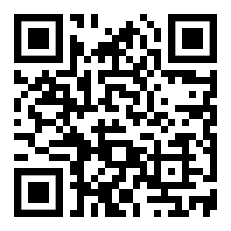Distance Education Pedagogy - ODL (Open and Distance Learning)
IGNOU, A++ Grade Accredited by NAAC, The mega University of world having more than 30 million students across the globe.
IGNOU an Open Distance University under the control of Ministry of Education , Govt. Of India is pioneer in Open Distance Learning (ODL) system.
Its degree and diploma and certificate is well recognised.
IGNOU Student Corner is designed with dedicated menu for Fresh Applicant, Old Learners and
many more.

Distance Education Pedagogy - ODL (Open and Distance Learning)
Distance Education - Concept and Need
Prior to the Industrial Revolution and before the emergence of the democratic state, education had been predominantly a prerogative of the elite class of society. The most effective form of instruction in those days was to bring learners together in one place and at one time to learn from the masters.
Democratic developments, if on the one hand, demanded access to education to all segments of society, industrial and technological developments, on the other hand, demanded periodical updating of knowledge and skills of the working people in particular and traditionally educated people in general. Due to limited means and inherent limitations of the pre-industrial mode and nature of education, progressive educationists started thinking of an alternative mode of teaching and learning. Thus, Correspondence Education emerged as an alternative form of education with the objective to provide educational opportunities to those who were not among the elite and who could not afford full-time residence at an educational institution.
Correspondence Education was a form of education in which instruction was imparted through teachers’ notes sent to the learners by post. Hence the name: ‘correspondence’. However this alternative form of education was not given much credence. Correspondence Education was looked down upon as an inferior form of education because it lacked any scope of communication between the teacher and the learner. However, the need to provide equal access to educational opportunities has always been part of our democratic ideals, so Correspondence Education continued to flourish.
With the adoption of communication technologies for educational purposes, Correspondence Education was recast as ‘Distance Education’. Its credentials and credibility got established with the transformation in the delivery mechanism with distance learners being provided with opportunities for communicating with the institution and their peers through face to face personal contact programmes organized at the institution’s headquarters, but in a limited manner. This was the beginning of the provision of learner support in the so called correspondence education system.
Further, the use of radio during the First World War and television in 1950s opened up new avenues for imparting instruction. Thus, Distance Education saw the use of other technology such as radio broadcasts, televised instruction, audio and video teleconferencing, besides print and limited face to face sessions, to break the isolation of the distance learners and develop two- way communication between the teachers and the taught for providing feedback and support to the learners in their learning endeavor.
Distance Education as it adopted the philosophy of openness- a unique feature that distinguished it from the conventional university. Openness can be described as removal of barriers with regard to entry requirements i.e., age, sex, ethnicity, class, health, wealth and qualifications; time, place and pace of study; and choice and combination of courses; course structure and delivery methods.
With the growth and spread of Open Universities the term Open and Distance Learning (ODL) emerged so much so that the term ‘Distance Education’ is being replaced with the term ODL.
Advent of Internet and World Wide Web in 1990s and the introduction of digital technology in education led to the emergence of ‘Online Education’/ eLearning which is often regarded as a subset of Distance Education/ ODL.
PEDAGOGY OF ODL
Teaching through ODL mode is quite different from teaching in the conventional education system. In conventional education system, face to face teaching is practiced in a classroom situation, where learner motivation, classroom activities, feedback, teacher guidance, and proximity of the teacher and learner create an ideal environment for learning. The learners are full time and relatively homogeneous in nature which facilitates contiguous learning.
However, in the ODL system, the situation is completely reverse. The learners are a heterogeneous group with irregular habits in studies and often with some of their entrance qualifications less than the others. Moreover, distance learners are also part-time learners.
The learners learn at their own place and pace. The education is imparted through the book which is delivered at door step are self-learning materials (SLMs) which are highly structured and self-contained are expected to carry out the role of a teacher. Hence, a number of learning activities are incorporated in the SLMs and the subject matter is presented in a simple conversational style.
Wherever possible an appropriate pattern of media mix, using audio, online video, broadcast, and web-based media along with printed SLMs is used.
References and studies : IGNOU Study material of programme PGDDE ( ES-311, ES-312, ES-313, ES-314, ES-318, Revised [ MDE-411, MDE-412, MDE-413, MDE-414 ] ).
Gooler, D.D. (1979) Evaluating Distance Education Programmes, Canadian Journal of University Continuing Education, 6 (1)
Click here for IGNOU Admission.
Read More for various Student Support Services.
 Check IGNOU Grade Card Status
IGNOU Assignment Submission Status
IGNOU Convocation
Know Your IGNOU RC Update in Pandemic
IGNOU Class and Practical schedule
Send Message / Date wise News
Check IGNOU Grade Card Status
IGNOU Assignment Submission Status
IGNOU Convocation
Know Your IGNOU RC Update in Pandemic
IGNOU Class and Practical schedule
Send Message / Date wise News
|
IGNOU Important Links with Last Dates. |
|
|
|

 Join Group!
Join Group!
IGNOUstudentCorner.com @2024-25. All rights reserved.




